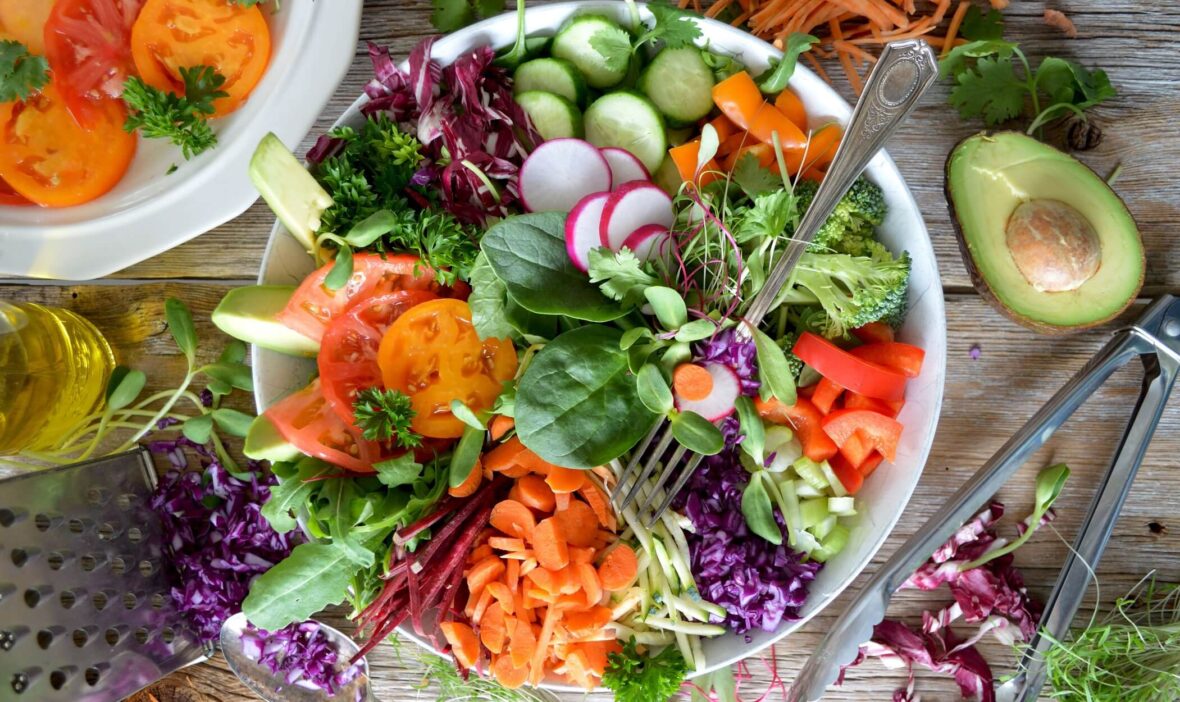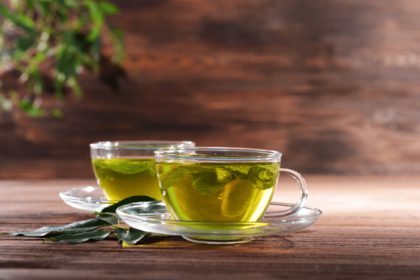Antioxidants, a type of substance produced in the body, are found in a variety of foods. These substances help to protect cells from potential harm caused by free radicals, which can lead to oxidative stress. This can cause damage to Deoxyribonucleic acid (DNA) and other essential structures in cells, and can increase the risk of chronic disease. Eating an antioxidant-rich food may help to increase the levels of antioxidants in the blood, which in turn can reduce oxidative stress and reduce the risk of diseases. The Fluorescence recovery after photobleaching (FRAP) analysis, which quantifies the amount of antioxidants in a food by neutralizing a free radical, suggests that foods with a higher FRAP value are more likely to contain antioxidants.
This article review the top 18 antioxidant rich foods, and potential risks of taking antioxidant supplements.
Health Benefits of Antioxidants
Eating a healthy diet particularly fruits and vegetables gives antioxidants properties, and provides numerous health benefits, as follows:
- May help fight oxidative stress
- Reduce the risk of developing certain diseases
- Provides vitamins A, vitamin C, vitamin E, selenium and carotenoids, like beta-carotene, lutein, lycopene, and zeaxanthin
Following are the top 18 antioxidant rich foods:
A. Antioxidant fruits
1. Blueberries –
Blueberries are a superfood because they’re packed with nutrition, vitamins and minerals. Plus, they’re packed with antioxidants, which can help improve brain function, keep bones strong, and lower the risk of heart disease. FRAP analysis shows that blueberries have a whopping 9.2 molts of antioxidants in every 3.5 ounces (100 g) of them. Some studies even said that blueberries have the highest antioxidant capacity of any common fruit. Plus, because they contain antioxidants, they’ve been shown to lower LDL cholesterol and blood pressure, and they’re super low in calories too. And since blueberries are packed with antioxidants, they might even have medicinal benefits for neurological issues, like those related to aging.
2. Strawberries –
Strawberries are a widely beloved fruit due to their sweetness, versatility, and antioxidant and vitamin C content. A FRAP analysis indicates that strawberries contain a high concentration of antioxidants, with an average of 5.4 mmol per 3.5 ounces (100 g). Antioxidants such as anthocyanins have been linked to a reduced risk of heart disease, as they are known to reduce levels of LDL cholesterol and raise HDL cholesterol.
Additionally, research has suggested that strawberries may reduce inflammation and lower blood pressure, potentially aiding in the prevention of heart disease. Raw strawberries can be consumed as a snack, in salads, and in baked goods, however, they are rarely healthy and are not recommended for those trying to lose weight.
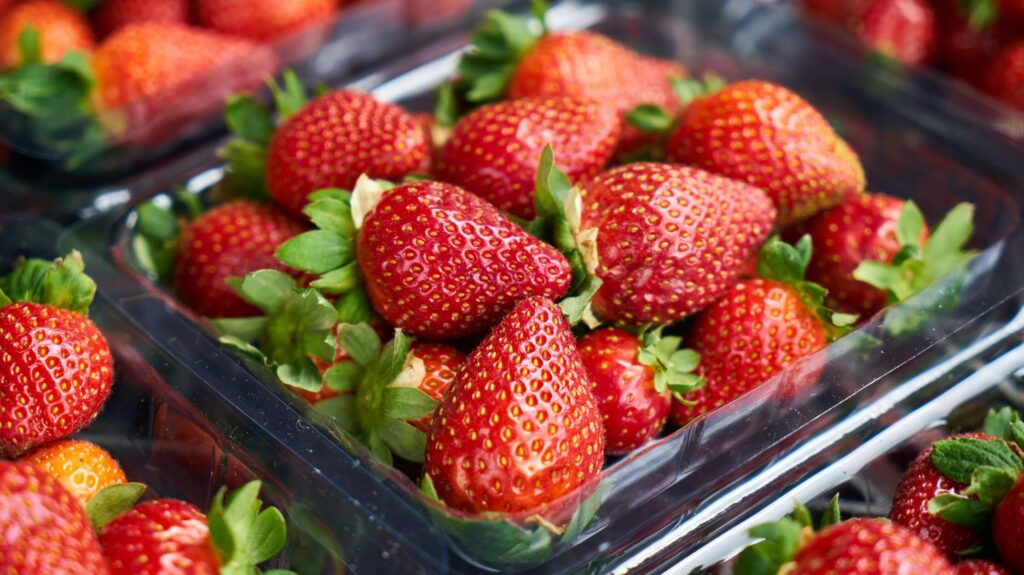
3. Raspberries –
Raspberries, which are soft and tart, are often used as a dessert. They are rich in dietary fiber and vitamin C. They also contain manganese and are rich in antioxidants. FRAP analysis shows that raspberries contain up to 4 milligrams (mg) of antioxidants for every 3.5 ounces (100 g) of fruit. Raspberries have been shown to reduce the risk of heart disease and several studies have shown that raspberries and other antioxidant components may reduce the risk of breast, colorectal, and gastric cancer cells. Antioxidants, especially anthocyanin, may also reduce inflammation, and oxidative stress.
4. Purple or red grapes –
Grape varieties such as Purple and Red have been found to contain Vitamin C, Selenium, and Antioxidants, specifically Anthocyanins and Proanthocyanins. These antioxidants may be beneficial in protecting individuals from cardiovascular disease or cancer.
5. Orange vegetables-
Lots of orange veggies are packed with vitamins A and other good stuff. They also have a ton of phytochemical stuff that can help keep your heart healthy and keep you cancer-free. You can find them in things like sweet potatoes and carrots, as well as Butternut Squash and other veggies that have lots of antioxidants.
B. Antioxidant vegetables
6. Red cabbage –
Cabbage, also known as red cabbage or purple cabbage, is packed with nutrients and antioxidants. It’s got four times more antioxidants than regular cooked cabbage, thanks to its anthocyanin compounds that give it its color. FRAP analysis shows that red cabbage can provide up to two and a half milligrams of antioxidants in every 3.5 ounces. These antioxidants have been linked to a range of health benefits, like reducing inflammation, protecting heart health, managing diabetes, helping with weight control, and even reducing the risk of some cancers.
Plus, red cabbage is a great source of Vitamin C, which helps keep your skin healthy and strong. Cooking it can also help boost its antioxidant levels, like boiling and stirring it, but steaming it can reduce it by nearly 35%.

7. Artichokes –
Artichokes is a tasty and healthy vegetable that is rich in nutrients, fiber, minerals, and antioxidants. It has been used in ancient times as a remedy for liver conditions such as jaundice, and FRAP analysis shows that artichokes have a high antioxidant content (4.7 mmol) and a low antioxidant content (3.5 mmol) per 100 g. Artichokes are particularly rich in an antioxidant called chlorogenic acid which may help protect against certain types of cancer and diabetes, as well as heart disease.
Studies have shown that eating artichokes regularly can be beneficial for gut and liver health, as well as lowering cholesterol levels. Depending on the method of cooking, cooking artichokes can increase the antioxidant content by 8-15 times, while frying them may decrease it. Eating artichokes regularly may help reduce a person’s risk of cardiovascular disease and related conditions.
8. Beetroot –
Beetroot is a great vegetable with an earthy flavor and lots of fiber, iron, and antioxidants. It’s especially packed with beta-carotene, which gives it its reddish color and has been linked to health benefits. Studies have shown that betalains can help reduce the risk of cancer in the colon and gut, as well as reduce free radicals. According to FRAP, beets have up to 3.5 grams of antioxidants in every 3.5 ounces. Plus, there are other compounds in beetroot that may help reduce inflammation, like beta-alanine capsules that can expressively relieve osteoarthritis and inflammation.
9. Spinach –
Spinach is one of the most nutritious veggies you can get – it’s packed with vitamins, minerals and antioxidants, and its super low in calories. Plus, it’s packed with antioxidants like lutein, zeaxanthin and more. These antioxidants can help protect your eyes from UV rays and other harmful light, and they can also help fight free radicals that can cause damage to your eyes over time.
FRAP analysis shows that spinach can give you up to a quarter of an ounce of antioxidants in just 3.5 ounces (100 g). And since it’s so low in calories, it’s a great addition to salads and other meals. Studies have shown that antioxidants from spinach can help reduce the risk of aging, heart health, and cancer.
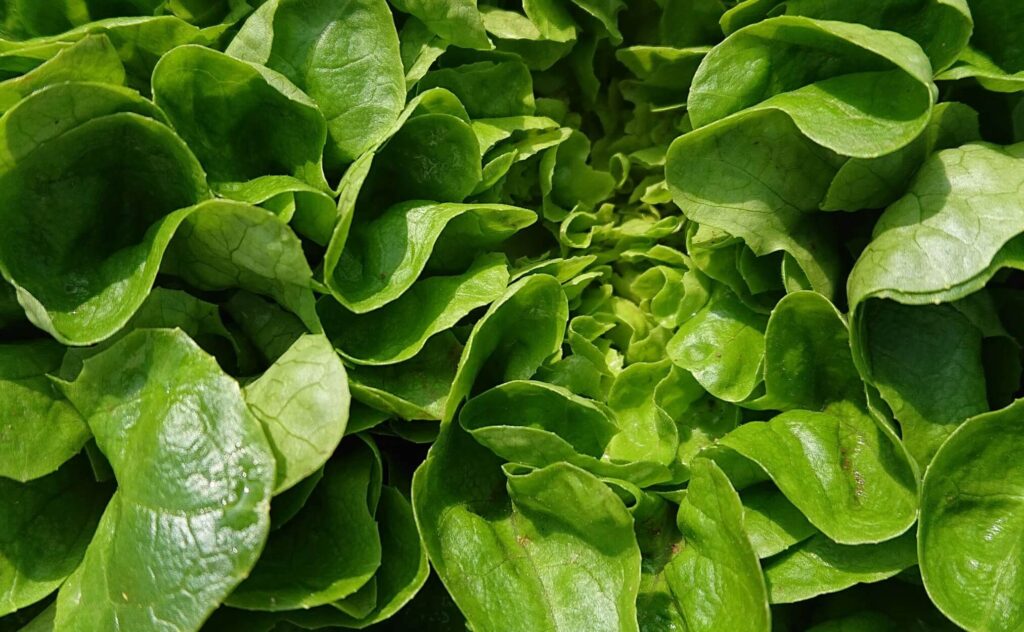
10. Kale –
Kale is an abundant cruciferous vegetable that is rich in vitamins A, vitamin C and vitamin K, as well as a variety of antioxidants. Its popularity as a health food and a strong winter vegetable has made it one of the most sought-after greens on the planet. Kale is particularly rich in antioxidants, with some varieties containing nearly twice the amount of antioxidants as green kale. This is due to the presence of anthocyanin and other antioxidants that give kale its vibrant color. Additionally, kale is a great source of calcium, a mineral that is essential for bone health and other cellular functions.
11. Beans –
Beans are an excellent source of proteins, phytonutrients and dietary fiber that are low in calories and high in vitamins and minerals. They are also one of the top vegetable antioxidants that can help with regular bowel movements. According to FRAP analysis, green broad beans have up to 2mmol of antioxidants in every 3.5 ounces (100 g) of beans. However, some beans, such as pinto beans, contain a special type of antioxidant that has been linked to amazing health benefits. These benefits include reduced chronic inflammation, and suppression of cancer growth in breast tissue, bladder tissue, kidney tissue, and lung tissue. Because beans have so many potential health benefits, you should include them in your daily diet.
12. Broccoli –
Broccoli and leafy vegetables are packed with phenolics, which are a type of chemical produced by plants to resist oxidative stress. Phenolics play an important role in human health, as they are packed with antioxidants and have anti-cancer benefits that may help protect against diseases, inflammations, and allergies.
13. Potatoes –
Potatoes are rich in carbohydrates, vitamins and minerals. As a result, they have many health benefits, including a higher antioxidant content. The antioxidants found in potatoes may play a role in lowering blood pressure, cardiovascular disease, and cancer and neurodegenerative conditions.
C. Other foods
14. Dark chocolate –
The consumption of cocoa-rich products such as dark chocolate has been linked to a range of health benefits, including a reduced risk of heart disease, inflammation, and reduced risk of high blood pressure. Studies have indicated that dark chocolate may be more nutritious than regular chocolate due to its higher cocoa content, as well as its higher levels of minerals and antioxidants. The antioxidant content of dark chocolate is estimated to be up to 15 millimonoles (mmol), which is greater than that of blueberries or raspberries.
Furthermore, research has suggested that dark chocolate may increase the levels of HDL cholesterol, while preventing LDL cholesterol from oxidizing, which is detrimental to the heart. Furthermore, dark chocolate may have other health benefits, including improved cognition, reduced memory loss, and increased mood.
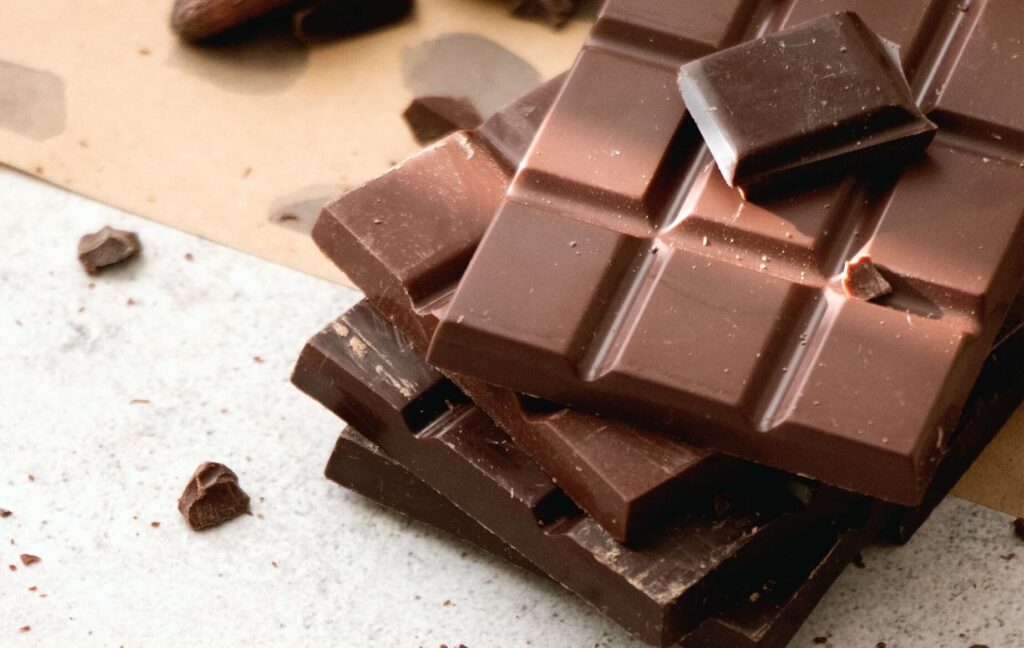
15. Pecans –
Pecans, which come from North America, are a great choice for people who want to stay healthy. They’re packed with healthy fats and minerals, plus they’re packed with calories. Plus, they can help boost your blood’s antioxidant levels. A FRAP analysis found that pecans have 10.6 milligrams of antioxidants in every 3.5 ounces (100 g).
Some studies even found that eating pecans every day for 8 weeks can help improve the levels of antioxidants in the blood of people at risk for heart disease, and it can also help lower your total cholesterol (bad cholesterol and LDL cholesterol) and triglycerides (bad cholesterol and triglycerides). They’re also packed with calories, but they can be really helpful for losing weight. Plus, some studies have shown that your body can actually absorb antioxidants from them, which can increase their levels in your blood.
16. Walnuts –
They are high in fiber, protein and unsaturated fats and are considered to be the healthiest nuts. They may help protect brain cells and improve memory. They contain high levels of polyphenols, which work with antioxidants to reduce oxidative stress. They may help reduce inflammation, control weight and prevent diseases like cancer.
17. Green Tea –
Lots of studies have shown that green tea has anti-inflammatory, anti-cancer, and anti-microbial properties. Plus, it’s packed with catechins, which are antioxidants that can help fight off infections.
18. Oats –
Oats are a high-quality cereal grain that can be found in various forms, such as milk, flours, granolas, cosmetics, and dog treats. Whole oats are rich in antioxidants that may help reduce chronic inflammation associated with heart disease, diabetes, and other conditions. Oats are also considered to be a good food for weight loss. Oats have high soluble fiber levels, which allow them to absorb water easily. This helps to slow down digestion and make you feel fuller.
What are potential risks of taking Antioxidant supplements?
Eating healthy is the best way to get antioxidants, and there are no concerns about the safety of antioxidants derived from food sources. However, taking high doses of antioxidants may have some risks, including:
- increase the risk of illness,
- drug interactions,
- hemorrhagic stroke, and
- prostate cancer.
- High doses of vitamin E supplements may also have issues, like increase the risk of lung cancer among smokers.
- Antioxidants may interact with certain medications, increase the risk of bleeding, and may not be recommended during cancer treatment.
Additionally, few studies have found that vitamin E supplements do not reduce the risk of cardiovascular events, such as heart attack or stroke, or cancer. Further, there are no beneficial effects on diabetes or cancer from antioxidant supplements, and supplements containing selenium and vitamin E have not been shown to prevent prostate cancer, even after follow-up studies.
Conclusion:
You can eat a bunch of different foods that are packed with antioxidants to help boost your health. Antioxidants can help keep your heart and eyes healthy, stop cancer, and help protect you from other common diseases. Plus, antioxidants can fight off free radicals that can build up and cause oxidative stress, which can lead to type 2 diabetes and other chronic diseases. Eating a diet full of antioxidants can help balance out free radicals and reduce your risk of these diseases. There are lots of foods out there that are loaded with antioxidants and can help you get the health benefits you need.
FAQ
How do antioxidants benefit the body?
Antioxidants play a vital role in preventing oxidative stress and free radical damage, which can lead to premature aging and a variety of chronic conditions. Additionally, antioxidants play an important role in boosting your immune system and lowering your risk of certain diseases, such as cardiovascular disease and cancer.
Are there specific fruits high in antioxidants?
Yes, Fruits are rich in antioxidants. Some fruits are particularly high in antioxidants, such as berries, which are packed with various beneficial compounds, such as anthocyanin and flavonoid. Other fruits that are high in antioxidants include pomegranate, oranges and grapes.
What are some common sources of natural antioxidants?
Antioxidants can be found in a variety of natural sources, including berries, citrus fruit, leafy green vegetables, cruciferous vegetables, broccoli, and Brussels sprouts, as well as in certain types of nut, seed, and grain sources. Therefore, it is important to maintain a balanced antioxidant intake.
How can I incorporate more antioxidant-rich foods into my diet?
You can add more antioxidant-packed foods to your diet by adding lots of colorful fruits and veggies to your meals. Look for lots of different kinds of berries, green veggies, and citrus fruit. You can also increase your antioxidant intake by adding nuts and seeds, as well as whole grains.
Reference Used:
https://www.healthline.com/nutrition/foods-high-in-antioxidants
https://www.medicalnewstoday.com/articles/325873
https://www.everydayhealth.com/diet-nutrition/high-antioxidant-foods-that-prove-food-is-medicine/
https://www.emedicinehealth.com/what_foods_have_the_highest_antioxidants/article_em.htmhttps://health.clevelandclinic.org/what-do-antioxidants-do/


